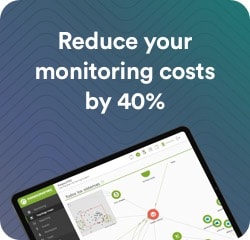Málaga, September 8, 2022.-The high temperatures throughout the summer and the scarcity of rainfall have alerted half Spain due to the drought Andalusia is one of the most affected areas and the both environmental and economic impact has already alerted public administrations and companies. Pending further action, there are already experts in the technology sector who point to some of their solutions as a possible mechanism to reduce the impact of this type of phenomenon.
In the digital age, there are many cities that are committed to technological support to improve their resource management. And as far as the environmental area is concerned, these types of systems are also valid. Monitoring, one of the most common in companies, can serve as a shield against catastrophes such as the one that plagues the Andalusian lands. “It is the future of cities”, recognize from Pandora FMS, a company reference in monitoring.
“Monitoring systems improve the effectiveness of any workforce. And, therefore, resource management. Monitoring with current technology what the decline of reservoirs is like, the level of precipitation compared to the usual drought figures or even knowing if the water consumption at homes is increasing significantly can help to anticipate scenarios such as the current drought,” indicates Sancho Lerena, CEO of the company that works with giants such as Rakuten or Repsol.
Such mechanisms are becoming more common. Although in the business world it is usually more common, administrations are also adapting. According to data from the Spanish company, in the retail sector it is possible to reduce the workload by 30% with this type of system. And, regarding the management of public administration, monitoring can triple the response speed of citizen services as in Madrid Digital.
“Monitoring will be fundamental for the so-called Smart Cities, which in a few years will be the goal of every capital or city with business hubs around the world”, Lerena acknowledges. “However, technology must also be implemented in rural areas or in domains such as the environment, in this case drought.”
Just as an example, in Andalusia there are already projects that reflect the power of monitoring. Recently, the city of Málaga has put into operation a pilot by which the operation of the counters of 8,000 households with elderly people or dependents is controlled. Through this system, the administration will be able to detect unusual behaviors, such as homes of habitual residence where no water is consumed for a long time or, on the contrary, where the increase in consumption may alert of an accident of the person living there.
“This type of monitoring could be used, in case of extending this type of systems, to learn about the widespread consumption of water in certain months and thus anticipate some measures in the event that any drought is expected during the year”, underlines the CEO of Pandora FMS.
Another case, purely oriented towards environmental control, is taking place in CSIC. The organization has gotten started with a monitoring system that analyzes the meteorological drought of the entire national territory, giving more data to the experts to anticipate the phenomena of the coming months.
“The weather drought monitor provides real-time information from the automatic weather stations of the AEMET Network and the SIAR. The information is updated four times each month and the state of the meteorological drought can be checked from two climate indexes”, indicate specifically from the CSIC.
A historic drought
Andalusia has already qualified 2022 as one of the driest periods of the last 50 years. In fact, a measure of how it is affecting the environment is the number of birds. Figures that from the Board are depicted as the worst among waterfowl of the last 40 years analyzing the situation of Doñana.
In addition, reference reservoirs such as that of La Viñuela, in Malaga, are 11%, that is, below the threshold of what is considered dead reservoirs (water level that cannot be used).
This situation, in turn, is anticipating an economic blow. According to forecasts, this 2022 the oil production will experience a 50% decrease. In 2021 there were more than 1 million tons, while in this year just over 500,000 are expected in what may be the worst year in the last decade.






